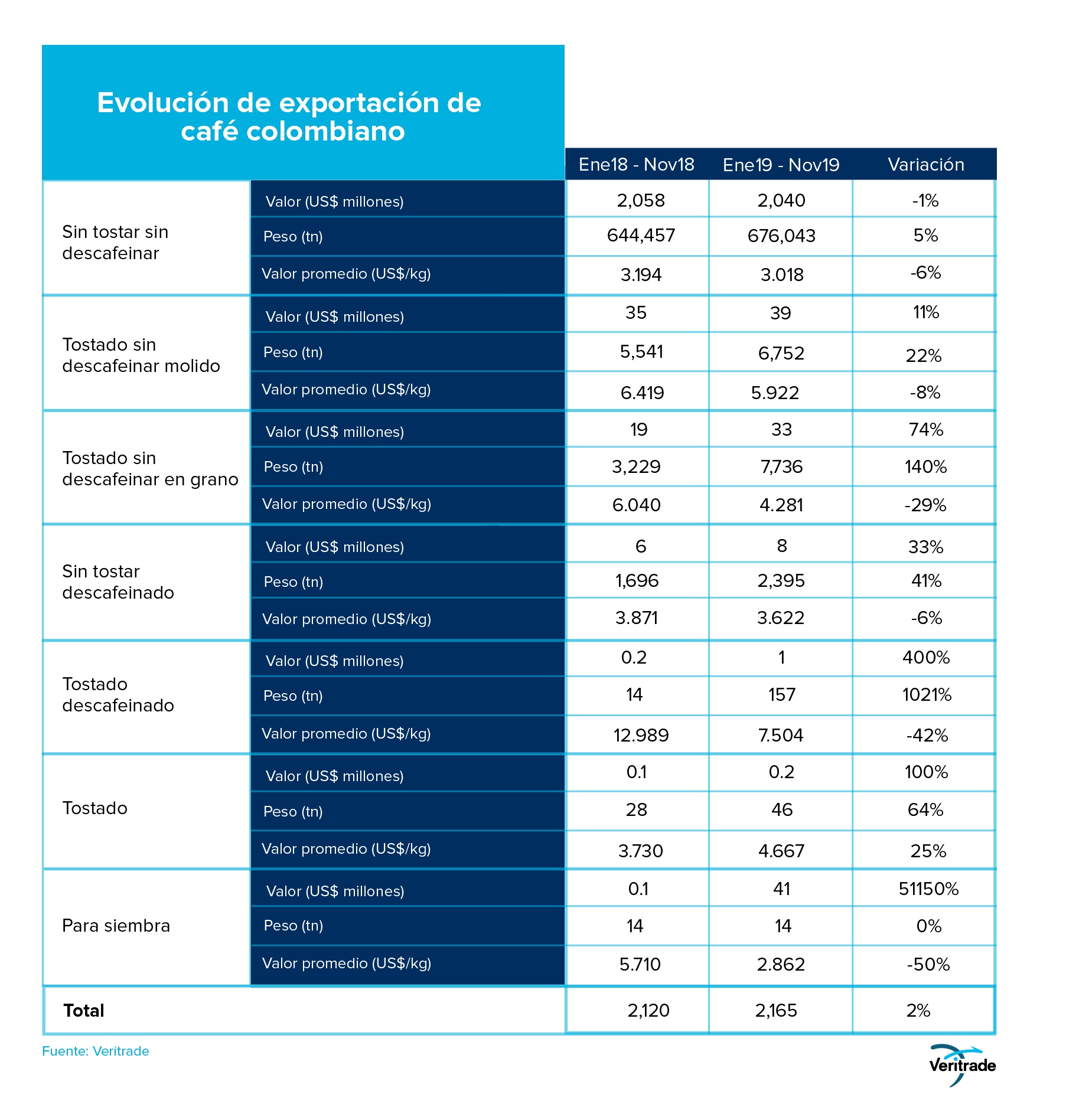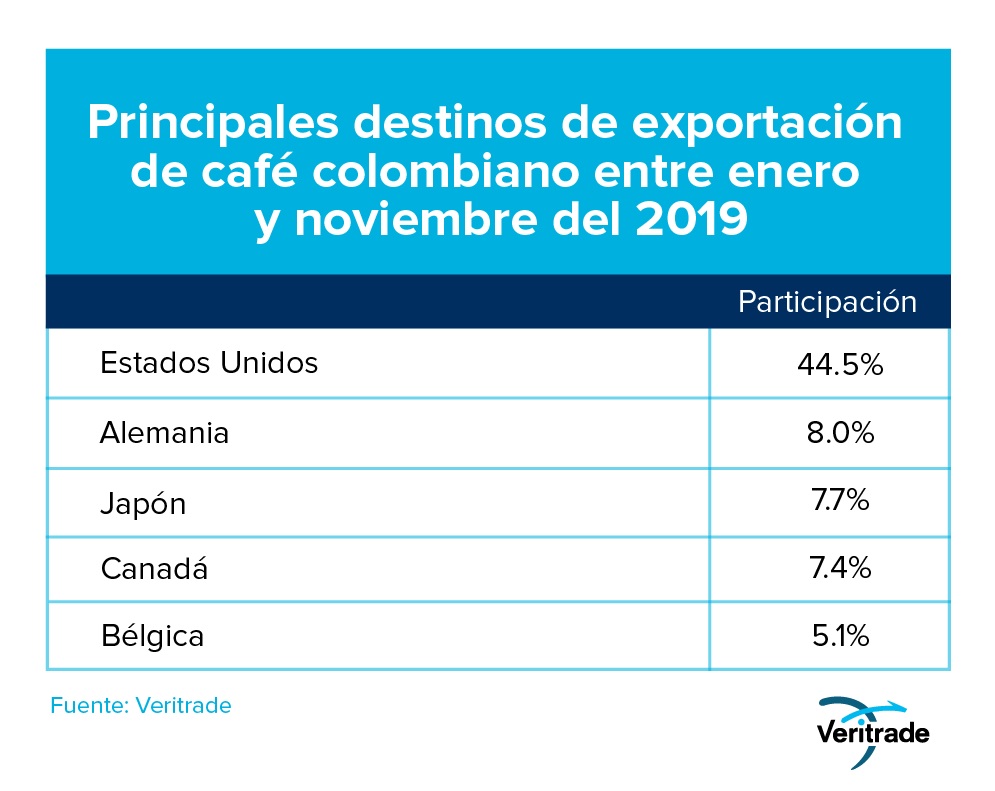Colombian coffee exports grew in terms of weight
Published on 13 January 2020
The value of the commodity did not rise due to lower prices, but the tonnage of the shipments grew. Meanwhile, other presentations had more increases.
The last coffee year, between October 2018 and September 2019, had a higher production than the previous two (14.2 million bags compared to 13.8 million and 13.9 million, respectively), and was the second highest in the last five years , by the way, represent the highest period in the history of the crop. However, international prices did not allow to take advantage of the boom, which is shared with other producers such as Vietnam (30 million bags, close to the record of 30.2 the previous year) and Brazil (recovered in a range close to 60 million bags after falling to almost 50 million in the previous three years).
In general, Colombia has managed to cling to its position as a global leader in terms of balance between quantity and quality in coffee of the Arabica variety, the most aromatic, thanks to the management of production with renewed or expanded crops. The following table shows the evolution of exports according to the different presentations used to export the product.

An important point in Colombia's positioning as a global market provider is that it not only offers the product as a commodity (unroasted grain), but that finished products such as ground or decaffeinated coffee have also been well positioned. Likewise, sowing grains have also developed a market, and Colombia is likely to continue as a supplier to the rest of the planet, in view of a productive success that other countries seek to replicate.
Among the particular aspects of the Colombian export model, there is state cooperation for cooperatives, which have professional management management and centralize the management of small farmers. The market is expected to continue determining planting and investment expectations, but for now, good results from previous policies are already being reaped.
It should be noted, however, that Colombian production must be subject to the expectations of the global market, and that what is expected to be put into production for the following years must contemplate the international scene to avoid excessive offers. For now, the demand is captive, and it is difficult to imagine a world in which cups are not consumed to start the day, keep pace and close the agenda. The largest markets, coincidentally, are those with the highest executive activity, as detailed in the following table.

In general terms, Colombian producers have achieved good results thanks to the strategic vision of the management of the National Federation of Coffee Growers and the other entities involved in the public sector for health and promotion, and the private sector for commercial development, complementary investment. and financing. The only really uncertain factor is bad weather, but it is a probability that must be assimilated as part of the risks in the business model.
For more information on Colombian coffee exports, you can enter the Veritrade portal.
Request your free trial by going to https://bit.ly/35QVqtK